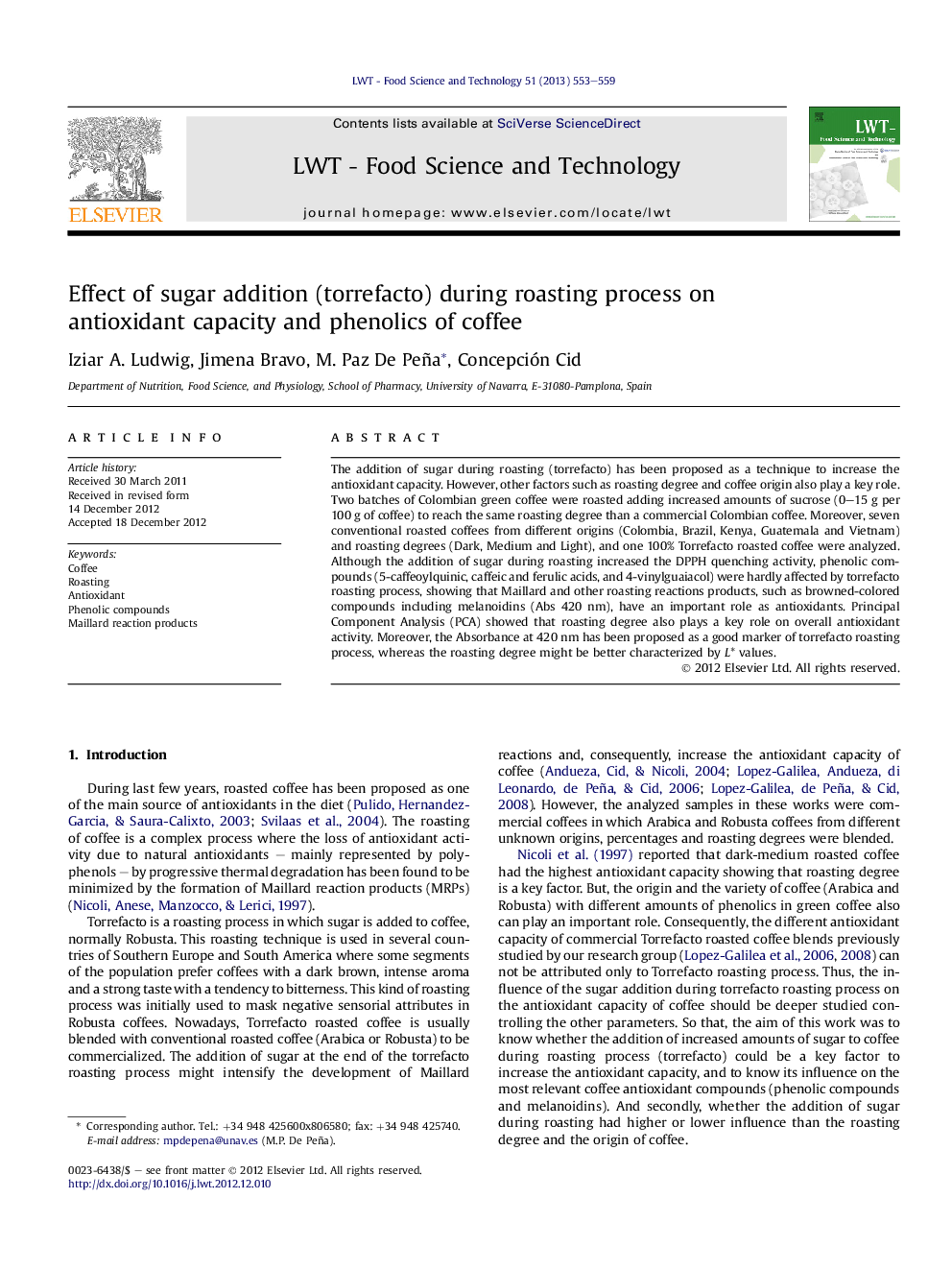| Article ID | Journal | Published Year | Pages | File Type |
|---|---|---|---|---|
| 4563957 | LWT - Food Science and Technology | 2013 | 7 Pages |
The addition of sugar during roasting (torrefacto) has been proposed as a technique to increase the antioxidant capacity. However, other factors such as roasting degree and coffee origin also play a key role. Two batches of Colombian green coffee were roasted adding increased amounts of sucrose (0–15 g per 100 g of coffee) to reach the same roasting degree than a commercial Colombian coffee. Moreover, seven conventional roasted coffees from different origins (Colombia, Brazil, Kenya, Guatemala and Vietnam) and roasting degrees (Dark, Medium and Light), and one 100% Torrefacto roasted coffee were analyzed. Although the addition of sugar during roasting increased the DPPH quenching activity, phenolic compounds (5-caffeoylquinic, caffeic and ferulic acids, and 4-vinylguaiacol) were hardly affected by torrefacto roasting process, showing that Maillard and other roasting reactions products, such as browned-colored compounds including melanoidins (Abs 420 nm), have an important role as antioxidants. Principal Component Analysis (PCA) showed that roasting degree also plays a key role on overall antioxidant activity. Moreover, the Absorbance at 420 nm has been proposed as a good marker of torrefacto roasting process, whereas the roasting degree might be better characterized by L* values.
► Sugar addition during coffee roasting increased the radical scavenging properties. ► Torrefacto roasting process hardly affected roasted coffee phenolics. ► Antioxidant capacity increase was attributed to Maillard reaction products. ► Roasting degree influences antioxidant capacity more than Torrefacto roast.
